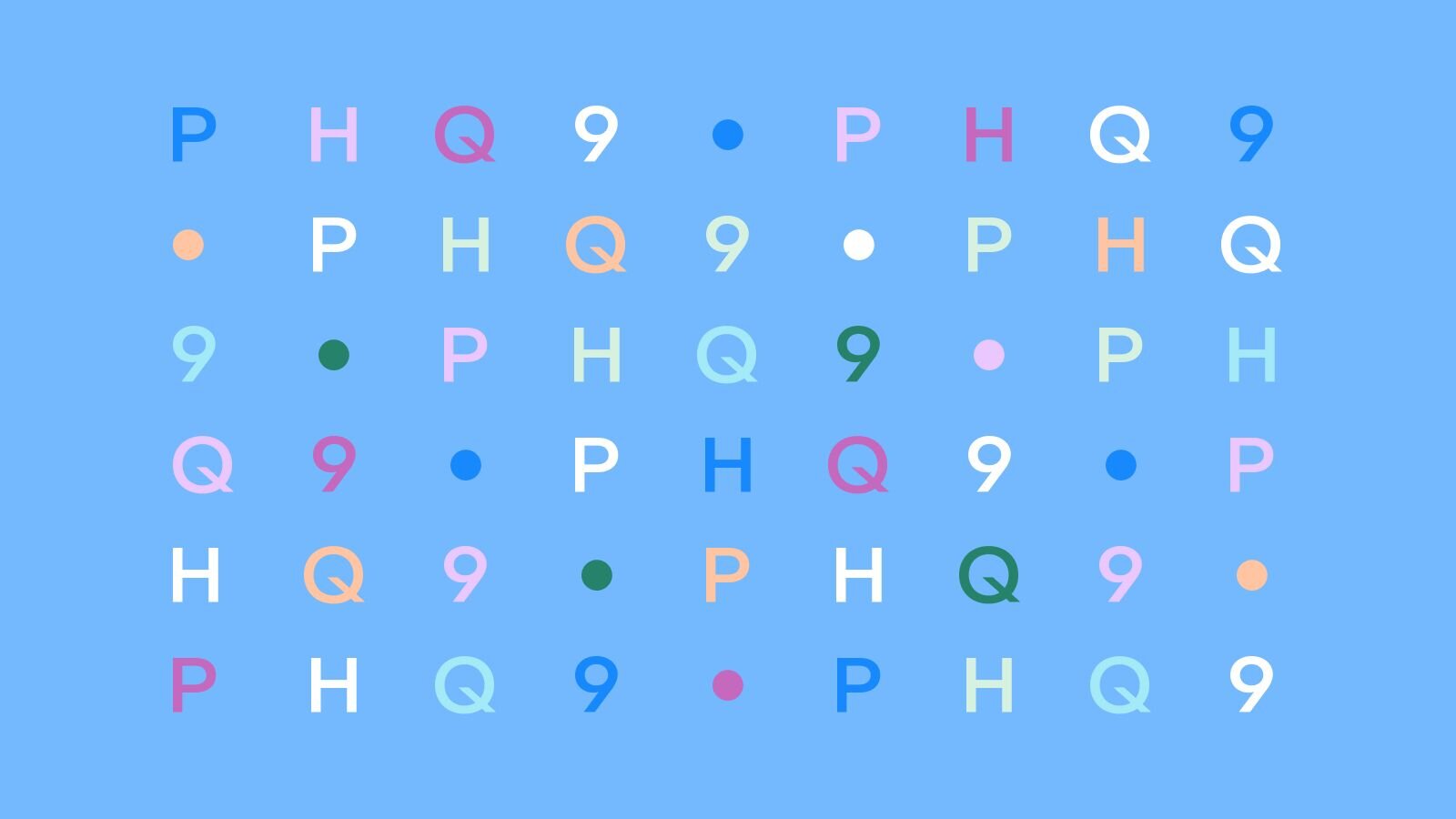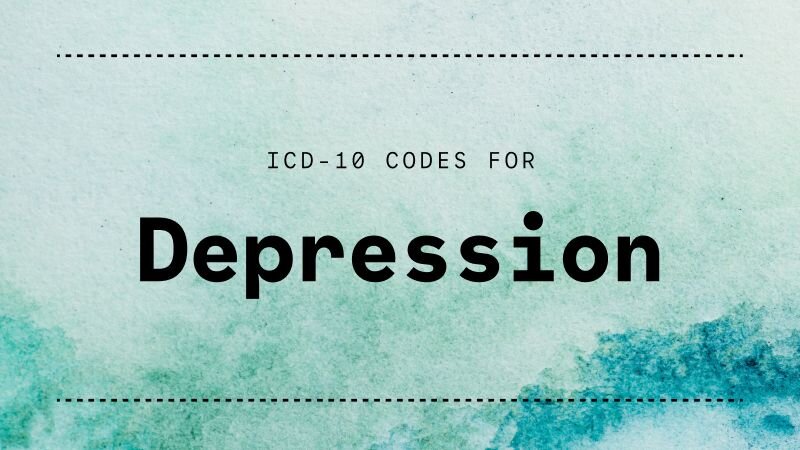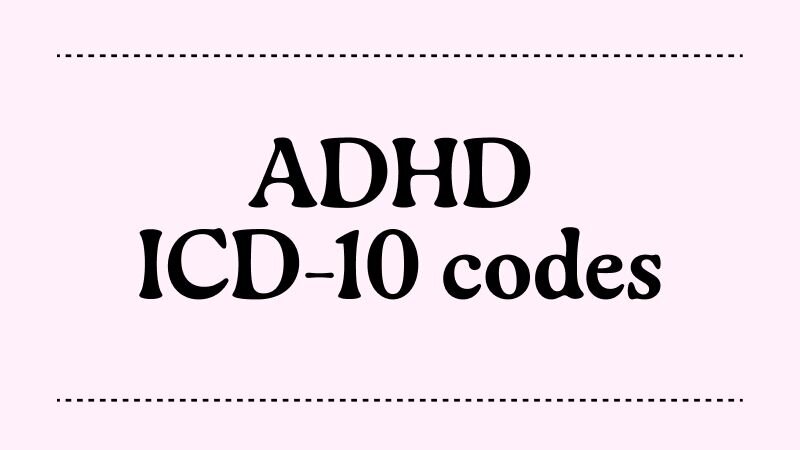
How to use the PHQ-9 to assess depression
The Patient Health Questionnaire-9 helps screen for, diagnose, and track progress with depression.

Here are some of the most common ICD-10 codes associated with depressive symptoms, with different criteria for frequency, severity, and other features.
The ICD-10 includes many different diagnoses for depression, with different criteria based on the frequency of episodes (single or recurrent), severity of symptoms (mild, moderate or severe), and whether it presents with or without psychotic features.
Your notes should support the degree of your diagnosis, says Sarah Scheimreif, Clinical Lead Medical Billing and Auditing at Headway: “If it's recurrent episodes, then we need to have a diagnostic statement that supports the recurrent episodes. Something like: This is their third episode in four years.”
It’s important that you make a clear, accurate and specific diagnosis that is appropriate to your individual patient clinical picture. These examples should be for reference and are not intended to guide a diagnosis. The client must meet diagnostic criteria for the F code they are assigned.
Here are some of the most common ICD-10 codes associated with depressive symptoms. They are included below, along with direct descriptions from the ICD-10.
The codes for mild, moderate and severe depressive episodes are based on this primary criteria:
In typical mild, moderate, or severe depressive episodes, the patient suffers from lowering of mood, reduction of energy, and decrease in activity. Capacity for enjoyment, interest, and concentration is reduced, and marked tiredness after even minimum effort is common. Sleep is usually disturbed and appetite diminished. Self-esteem and self-confidence are almost always reduced and, even in the mild form, some ideas of guilt or worthlessness are often present. The lowered mood varies little from day to day, is unresponsive to circumstances and may be accompanied by so-called "somatic" symptoms, such as loss of interest and pleasurable feelings, waking in the morning several hours before the usual time, depression worst in the morning, marked psychomotor retardation, agitation, loss of appetite, weight loss, and loss of libido. Depending upon the number and severity of the symptoms, a depressive episode may be specified as mild, moderate or severe.
Single episodes are most commonly diagnosed as mild or moderate:
F32.0: Mild depressive episode:
Two or three of the above symptoms are usually present. The patient is usually distressed by these but will probably be able to continue with most activities.
F32.1: Moderate depressive episode:
Four or more of the above symptoms are usually present and the patient is likely to have great difficulty in continuing with ordinary activities.
You may also consider an unspecified diagnosis for a single episode:
F32.9: Depressive episode, unspecified
Depression NOS
Depressive disorder NOS
In this case, “NOS” means “not otherwise specified.” You might select this diagnosis if it’s clear that the client is experiencing a depressive episode, but the specific features of the episode are unknown.
If specific features can be accurately documented, it's always better to use a more precise code for your clinical billing.
The codes for mild, moderate and severe depressive disorders are based on this primary criteria:
A disorder characterized by repeated episodes of depression as described for depressive episode (F32.-), without any history of independent episodes of mood elevation and increased energy (mania). There may, however, be brief episodes of mild mood elevation and overactivity (hypomania) immediately after a depressive episode, sometimes precipitated by antidepressant treatment. The more severe forms of recurrent depressive disorder (F33.2 and F33.3) have much in common with earlier concepts such as manic-depressive depression, melancholia, vital depression and endogenous depression. The first episode may occur at any age from childhood to old age, the onset may be either acute or insidious, and the duration varies from a few weeks to many months. The risk that a patient with recurrent depressive disorder will have an episode of mania never disappears completely, however many depressive episodes have been experienced. If such an episode does occur, the diagnosis should be changed to bipolar affective disorder (F31.-).
Recurrent depression is often diagnosed as mild, moderate, or severe, depending on the current instance of the episode. Severe episodes can also present with or without psychotic symptoms, such as delusions or hallucinations:
F33.0: Recurrent depressive disorder, current episode mild:
A disorder characterized by repeated episodes of depression, the current episode being mild, as in F32.0, and without any history of mania.
F33.1: Recurrent depressive disorder, current episode moderate:
A disorder characterized by repeated episodes of depression, the current episode being of moderate severity, as in F32.1, and without any history of mania.
F33.2: Recurrent depressive disorder, current episode severe without psychotic symptoms:
A disorder characterized by repeated episodes of depression, the current episode being severe without psychotic symptoms, as in F32.2, and without any history of mania.
Endogenous depression without psychotic symptoms
Major depression, recurrent without psychotic symptoms
Manic-depressive psychosis, depressed type without psychotic symptoms
Vital depression, recurrent without psychotic symptoms
F33.3: Recurrent depressive disorder, current episode severe with psychotic symptoms:
A disorder characterized by repeated episodes of depression, the current episode being severe with psychotic symptoms, as in F32.3, and with no previous episodes of mania.
Endogenous depression with psychotic symptoms
Manic-depressive psychosis, depressed type with psychotic symptoms
Recurrent severe episodes of:
The World Health Organization’s official ICD-10 manual is available online, where you can find a list of depression-related codes, listed under F32: Depressive episode and F33: Recurrent depressive disorder.
The ICD-10 Database is another source for detailed clinical information about each ICD-10 code. This database is maintained by AAPC, the American Academy of Professional Coders.
Not all ICD-10 codes are accepted for insurance billing. Each insurance company typically has its own specific guidelines for claim submission, and have lists of covered and non-covered codes, so it’s important that you stay up to date with the billing requirements of the insurance plans you’re credentialed with to ensure the codes you’re using are supported for reimbursement.
The ICD-10 is a coding system developed by the World Health Organization (WHO) for the classification of diseases and other health-related conditions. The alphanumeric codes in the ICD-10 are used by healthcare providers and insurance companies to represent disorders and other health conditions for the purpose of standardizing medical records and billing.
Its name, ICD-10, stands for the International Classification of Diseases 10th Edition; the 10th edition was endorsed in 1990 to replace the ICD-9, and fully adopted in the United States by October 1, 2015.
The DSM-5 (Diagnostic and Statistical Manual of Mental Disorders, Fifth Edition) and the ICD (International Classification of Diseases, Tenth Revision) are both classification systems used in the diagnosis of mental health disorders, but they have different origins, purposes, and scopes.
The DSM-5 is published by the American Psychiatric Association (APA), is used primarily in the United States, and focuses exclusively on mental disorders.
The ICD-10 is published by the World Health Organization (WHO), is used worldwide, and covers all health-related issues, not just mental disorders.
The DSM-5 is compatible with the ICD-10 coding system now in use by many insurance companies. Because it has a narrower scope, the DSM-5 includes more detail about the diagnostic criteria for mental disorders. The criteria included in the DSM-5 can be used to diagnose mental health disorders, and documentation should demonstrate the support of this diagnostic criteria.
This document is intended for educational purposes only. It is designed to facilitate compliance with payer requirements and applicable law, but please note that the applicable laws and requirements vary from payer to payer and state to state. Please check with your legal counsel or state licensing board for specific requirements.

The Patient Health Questionnaire-9 helps screen for, diagnose, and track progress with depression.

There are many ICD-10 codes associated with anxiety disorders. Generalized Anxiety Disorder is most common, but there may be a more precise code that documents your diagnosis more effectively.

A client presenting the symptoms of ADHD will most commonly be diagnosed with a specifier code that provides detail about how their symptoms present.